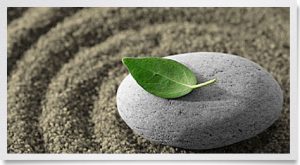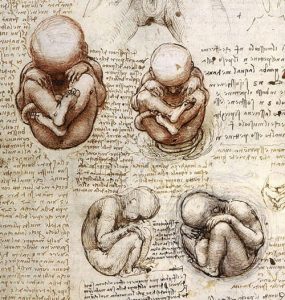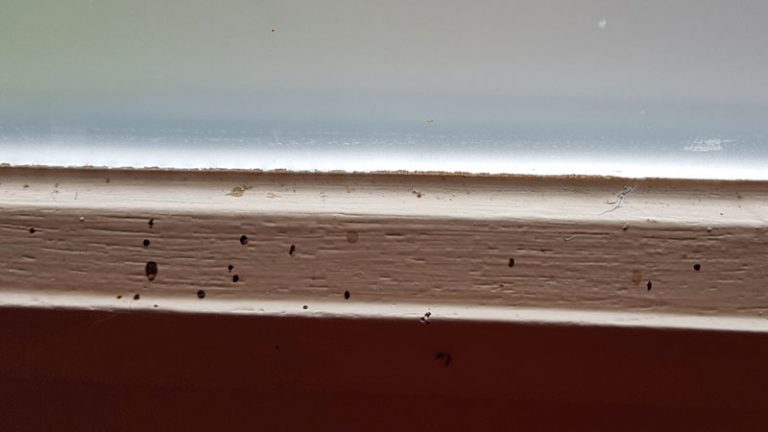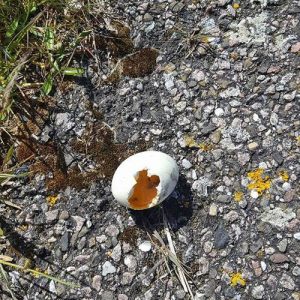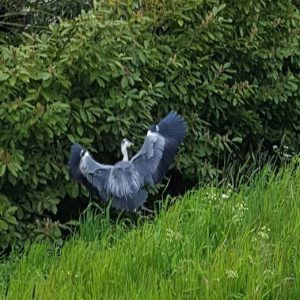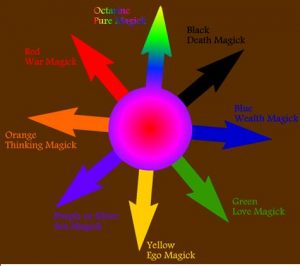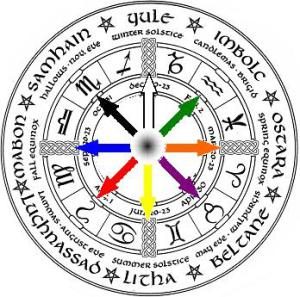(Continued from part 1)
On tradition, politics, magical practice and evolution
Morgana: I think it is like when Joseph Campbell talks about the need for a ‘story’. There has to be a beginning, middle and end, and if you don’t have that people feel uncomfortable. He also talks about mythology being the language of religion. I think this what we all want – “a good ending”.
JULIAN: I think it’s wired into us 🙂
I’d just like to come back briefly to the concept of SLOW Chaos. I think it’s quite an important idea. On one level it’s the inevitable effect of CM at its middle-age – but in terms of me and Steve as ritualists and in terms of CM as a tradition, because it’s over 30 years old and has reached the stage of what is called in Art criticism, the minimal /critical distance, when you can look back on the tradition. One of the things about looking back at Slow Chaos is to say that Chaos Magic, as Steve was explaining, can be seen as this kind of rapid-fire approach to magical practice – you know, the quintessential Chaos Magic that you can draw a sigil on a thing and you masturbate over it and pop, there it is. I think what we were interested in was that CM can also be about Death, and can also be about a practice that can be quite disciplined and quite simple, very very simple.
Going back to the ritual we were talking about (the Ganesha ritual performed at the ‘Colours of Magic’ conference – Morgana) is that we can even simplify it even further with meditative practice and to what then becomes, in what we refer to in Chaos Craft as “The Ninth Gate”. So it’s that sort of practice of silence and stillness and that is really important. Just to really reiterate that is also really important to note that it’s not “the be all and end all”. So as well as the wild, edgy cultural forms, and the innovation and fun – all that sort of stuff which is great, but to counterpoint it with something that is gentle, simple and easy actually. So than rather than striving for something that is exotic gnosis, it’s about having, for example, a meditative practice where one can notice how things are right now. Don’t worry about changing anything particularly.
Being in the here and now and recognising the fact that although many people are interested in CM as a system, there are also many very disciplined practitioners who are interested and involved in it and are very skilled practitioners in their own individual fields. So CM isn’t just about, or isn’t only about swapping magical paradigms, as one might swap partners in a swinger’s party J It’s about developing that kind of ongoing relationship with a particular style, your own interest, and deepening that.
Morgana: yes, it’s coming back to the “mindset” which in Western society is still greatly influenced by Christianity. We have also seen similar tendencies when we talk of the ‘Maturity of Wicca’.
When did you decide to connect the Wheel of the Year to the Colours of Magic? Did it happen gradually or did you have this Eureka moment?
JULIAN: For me, it’s been always been a question of recognition. Ever since encountering the Chaos Star, the 8-pointed star, as someone schooled in the old pagan tradition, the form of Wicca, I look at a thing with 8-points and see a recognisable image. If I was a Buddhist, I would probably see it through that lens. Or perhaps via I-Ching. When I look at it I see the Wheel of the Year and so it seems a fairly obvious thing to do. Pete Carroll had come up with this model – 8 Colours of Magic – it’s a handy descriptor, very much rooted in the Hermetic Tradition, with a Western Cabbalistic influence. The same colours are used and he laid them out in this 8-fold format. So bringing those two things together and thinking; what does that allow us to think about the Sabbats and wondering how they may relate to one another.
So the colours as presented by Pete in “Liber Kaos” were moved around to make sense for us and in relation to our understanding of those festivals.

(The Eight Colours of Magic …)
STEVE: I’d like to add that it was your genius which came up with the current scheme, I just nodded my head, sagely. But I think it also connects to the, in a very Wiccan way, and perhaps to the work by Vivianne Crowley. Just thinking about the way in which the turning of the wheel of the year in the Northern Hemisphere maps on to things like human development. Things like maturing and adulthood moving towards Crone-hood and negotiating death. It made sense in terms of the question: what is the end game here? Because in some ways CM – if there is any criticism – is its lack of teleos, it’s lack of direction – in a post-modern sense of “What the heck is it all for?” And I think that we all try to work with this idea of how are we maturing, as human beings. How are we unfolding and how do these magical techniques assist us in that?
JULIAN: And using that flow of the seasons as this idea of the iterative process, although it may be a kind of teleological project, it’s not necessarily one about a fixed end game of life,
So we ran this group, which was essentially a coven-type structure but as Steve mentioned earlier, the way that we did the running of the group process was that we did it in a style that was broadly influenced by CM and more specifically the way the IOT (Illuminates of Thanateros) tends to structure, and run rituals. So that rather than having, as you do, a classical Wiccan coven – a High Priest and High Priestess and then having others as participants – what we did was to use the model where we would have a meeting and it would be themed around the time of the year obviously and the specific ‘colour of magic’.
Even more importantly, each person who came along had the opportunity to bring a piece of magical work that was in tune with that particular flavour. So we sat at the table, like now, and asked if anyone was bringing a particular piece of work. We would rough out the time needed, whether there were any particular requirements – did it have to be at night, outside, indoors etc. Then we would create the running order of the ceremony as a whole with all these micro-ceremonies but again thinking about the Slow Chaos approach, and going deeper, they are all still part of the one theme.
So it’s not like having a meeting where people can bring anything – anyone CAN bring any practice but nevertheless, it is informed by the colour of magic, the time of the year, the point at which we are working.

( … and The Wheel of Chaos)
Morgana: This approach is pretty consistent with Nature religions and the importance of the moon, the lunar cycle and Moon Magic. Being in the here and now. Also ‘Where are we now? What is happening to me?’
STEVE: For me it’s and- and in some ways but the path of the witch is one of gnostic awakening. It is within the context of Nature. So rather than it being in the light of Christianity and a salvation-based religion, or like the Buddhist enlightenment that’s all about the Self being enlightened, it’s an idea of actually what would it mean for me to be liberated here, in the context of nature and this planet and this biosphere. Enlightenment and my awakening do not need to be removed from this. In fact, it can only happen within it.
JULIAN: And that is one of the interesting things you have been writing about in “A Gnostic’s Progress” because there is a thing that you talk about in the book about the relationship between Gnosticism and the Body and how problematic that’s been. So actually the idea of reconstructing the idea of a gnostic style which doesn’t disapprove of the embodiment; it was a really interesting process. That’s really important because it’s one of the things that Steve and I – and the people that we work with are really quite interested in, is the idea of the Divine, the Sacred, the Magical, being the same thing as the World. So there isn’t a separate realm necessarily. We can hypothesise those things, we can create all sorts of mathematical and imaginative models that still have the feeling of “in and of the World”. They are not really separate – there is no separation.
Morgana: Indeed, being connected to Nature, that we are Nature, Human Nature. There is no separation. We are in the here and now, as much as the trees or the river. And we are part of this whole Earth evolution.
JULIAN: And it’s also true to say that we humans are a very ODD part of nature.
Our apparent separation means that we can articulate the ideas of Nature and Culture. This idea appears in some of the Left Hand Path material about Seth; it’s articulated by The Temple of Seth, Steven Flowers – this kind of thinkers – that the separation arises as part of human awareness that sets up those divisions of Nature & Culture.
STEVE: Yes, and that seems to be an emergent property of human consciousness that we wonder what else there is? That wonder, a sense of the numinous, the transcendent. It’s an intriguing puzzle, isn’t it? It’s probably what prods us on our path of evolution. As someone noted “We are here to go”, so the idea of the project of being ‘human in the World’ is an ongoing thing and that (using) magic is one of the main ways that people can explore.
Morgana: The thing that drew me to CM was the fact that it also seemed to be interested in evolution. How is consciousness evolving? Systems like Golden Dawn are well established, whereas something like CM is in itself still evolving. I liked the Chaos approach to evolution and the different spheres – the Geosphere etc. (See notes) This was for me an eye-opener.
It was also similar to what Rudolf Steiner was talking about concerning consciousness and the four ‘bodies’ (physical – etheric – astral – spiritual) and the ‘awakening of the sentient soul’. First of all, though one had to go through a period of detachment, separation.
STEVE: I suppose the thing is about Crowley and the Golden Dawn, and things like Theosophy and Anthroposophy as well, they are all profoundly aeonic, looking at periods of human history but with an idealisation of past culture. I see people on the internet saying that we are in the Age of Kali Yuga etc. and there is the idea that everything is going to shit. And I can see that on one level, but equally, I am really happy that we have good dental care and antibiotics and that I am not dead because I am over forty. Those are good things and I like those. So I think that what CM does do is to have a guarded view of optimism about human creativity – which is what draws me to it, because rather than saying, we actually need, in a reconstructionist way, access to a ‘Golden Age’ that’s gone.
Morgana: indeed, and why I was attracted to Wicca because it was dealing with the here and now, and the ‘everyday situation’. In interfaith, I see that it is the common goals – like the need to protect the rivers and oceans – which are effective. It is not about the theological discussion but about Ecology. In my experience in Interfaith, that is a much easier platform to work from to get people to work together.
Unfortunately, politics and ‘man-made borders’ get in the way of truly working together.
JULIAN: Yes, indeed, from the political stance and the role of politicians. Do you know who was Prime Minister 100 years ago in Britain? No? Neither do I. The things that actually change culture – yes politics in the way that it is played out, in terms of international relations and so on, are undoubtedly significant but there are many, many other factors at play – everything from the work of artists, engineers, mathematicians, theorists – all important stuff. We imagine that politics is the receptacle of all power in the world but that is by no means true.
STEVE: If you think about something like someone like Ronald Hutton and his observations in “Triumph of the Moon” about this romantic movement which then gave birth to this religious revival we call Wicca and which then that, in turn, has hugely influenced the mindset of things like depth psychology and so on. In some ways, I don’t give a shit whether people play with the Tarot or not, but I do care about what they do to the planet, ultimately. The biggest gift that paganism has given us is the notion of the necessity to take care of the planet and the place where we are living.
JULIAN: I think one of the things that practically happens which is a nice thing from the point-of-view of CM and the New Religious Movements, that have come up and who regard themselves as pagan of various stripes, is that point, about having this view of multiplicity. That people have different views from us is obvious, but to take on board that your perspective of the universe, is something which is, both malleable by outside forces, just to talk about inside/outside to simplify things but is also able to be changed by you and your own behaviour and to realise that.
For me some of the difficulties we face as a species is very often to do with – not so much resources but mostly to do with the fixation on things, our unitary view of things and our inability to see either /other possibilities that we might be engaged with, or very often to genuinely understand the perspective of someone else. I think that having a discipline whether it’s from a magical practice or psychology – or any other number of things that allow us to appreciate that multiplicity view – and the fact that different views on an issue, or an object, or an activity in the world can have a multiple number of stories associated with them.
One of the things that I think we see in some of the forms of religious practice which have been politicised – so Islam is the obvious example, speaking as a Westerner living in Britain – is that it is about trying to create this monolithic view of how the world should be. And then to try and assert that even to the extent of having this monolithic idea of Islam, which is completely nonsensical both historical and culturally. So you are having practices in the world, people in the world, who are pushing this agenda of multiplicity and I think it is really important to support that person, both culturally and from a species level.
Morgana: Yes, understanding diversity too. In the book, there is this sense that there is no need for these ‘man-made’ borders. If, as pagans, we are supposed to be these ‘wild spirits’ and ‘free’ there should be the questioning of “What are our intentions? Motives?”
At the end of the book then, as a conclusion, can you describe what your intentions are?
STEVE: I think as Julian said – to represent, to put out there and encourage our multiplicity and to also promote Queerness in the broadest sense; that to do magic it means to question the borders of who you think you are – and whether it is your gender, or sexuality, or politics, or theology – that if magic does anything it should both soften and blur the edges of that which you think you know and open your mind up to the possibility of something different. That working with others especially gives you an environment in which you can explore that safely. It’s not just you doing it inside of your head – it’s in relationship with other people. They create the balance and the mirror to ourselves, that allows depth and collaboration to happen.
Going back to the question about mindfulness – one of the critiques of it is that originally these practices were in a community and that is where they make sense. These existential questionings were what you did WITH people. So in the midst of trying to do this challenging stuff you had others around you to care for you and support you and say yeah “I’m going through that stuff as well, I understand, or at least I think I do.” Yes, I think that was what I was trying to convey in the book.
JULIAN: I suppose for me – yes, all the above – but also about presenting, deliberately presenting, a work-in-progress in some respects. And hopefully to give people something that they might find interesting and ideally, inspirational. To say, “This is what we did. this is a record of what we did” It is a slice, effectively, out of our collective magical diary. I personally find that interesting and part of the reason that a lot of what I write is autobiographical is because the things that I enjoy reading are very often “here is the ritual, that’s all very good, marvellous, but how does it fit in the context of the overall process?” I need to see it make sense or I find it most interesting to articulate it in those ways.
So it is an opportunity to say “this is the work that we have done, here it is presented.” In a way, it is unfinished and comes deliberately so. Fortunately, we have had people respond to the book. One person, I can think of went through the whole of the year-long practice where there was the part of making the Spirit Jar at each of the Sabbats, essentially all the ritual debris goes into the magic jar. We got an email from a person who had gone through the whole practice for themselves, in their own way and they constructed these jars. Now I wouldn’t want everyone to replicate that but it was really lovely – as authors – to read that we had inspired someone to do it in their own way, to use a bit of it, and that they really enjoyed it. They included photos of the jars that they had created.
Morgana: Yes, being inspired by others. But also being fascinated. Doing the rituals with enthusiasm.
JULIAN: If you look at the Book(s) of Shadows – look at the close analysis of the different texts and versions, no doubt we will see different versions of Chaos Craft turning up in places like the Museum of Witchcraft and Magic in Boscastle. So research, which can compare these texts. The reason why I compared Chaos Craft to a BoS, is that effectively The BoS, it too is a magical diary. Gerald Gardner piecing together all sorts of stuff and meeting Doreen – “Alright Doreen you can write poetry; you can fill in some gaps.” And then him turning around and saying “Oh I have just discovered these Laws.” So that’s also work-in-progress.
But if we confuse that with the idea of it being a ‘revealed text’, that the rituals must be performed in this or that particular way, that’s insane! If you look back at the BOOKS of Shadows – which is perhaps a more accurate description – you can see the development of this ritual practice for these individuals. Okay, you may work within a ‘down-the-line’ tradition where there is your covens’ BoS copied out – I know of no-one who I have worked with who I consider to be ‘good at their stuff’ who doesn’t at least add stuff. Everyone adds something. They must do because that’s what we should be doing. Tradition in that sense is about keeping this flame actively going rather than worshipping the ashes.
Morgana: And yet there are those who want the BoS is to be set-in-stone. And that it is very difficult to introduce new material. There is also the camp who regard the Craft as being heterosexual. So there will always be a group of people who are not open to change and do not see the tradition as being organic.
JULIAN: Well if magic is, at least one description of it is, that it is energy tending to change and then not wishing to change, I would suggest that one perhaps loses the magic.
Morgana: It becomes ossified.
JULIAN: I mean join the Masons, believe me.
Morgana: That’s the problem, though. If we want to be eclectic, then we should go and join an Eclectic group. Which is very sad. It’s like the cultural phenomena of when for example people move from Europe to North America, continue to live the way they were taught and then years later they return to the original country only to find that many things have changed. It’s quite normal for people moving to want to retain their cultural heritage, their tradition. In some respects, the same thing has happened to Wicca in America.
STEVE: This is also something that relates to the SLOW process, that you can work within a genuine tradition that people find really meaningful and its evolution doesn’t need to be overnight. The integration of the material should be tested and weighed as being valuable, psychologically powerful – but to not change at all, as Julian said, I can’t see the point.
JULIAN: I certainly wouldn’t like it. I mean I can appreciate, again thinking about this idea of Slow Chaos and the idea of depth and repetition, there is nothing inherently wrong with those things. That’s completely fine but again it’s about – do you allow for a multiplicity of experiences? You cannot step into the same river twice; you cannot do the same sabbat ritual twice. It’s simply impossible. Therefore, if it is impossible, it makes a lot more sense to intelligently adapt to differences in technique, a difference in circumstance and that’s what to do, to have multiplicity and the appreciation of really what’s going on. I’m sure within the US – and America is a big place – there is a huge diversity of pagans as I understand out there. I can also appreciate people who want to maintain an identity, they want to maintain ideas of integrity, but I don’t think it has to be an either/or. It could easily be both. I am really pleased to be a part of the Kaula/Nath lineage, that romantic moment and feeling that it at least goes back to the 9th century. But the practice that I engage with is obviously going to be hugely different from what people did hundreds of years ago. I can still feel part of the lineage because of the initiatory process in that particular context. And also more broadly, being a magician in the 21st century, there are lots and lots of people behind me in terms of the lineage of my interest, my style, my hobby and with a bit of luck those people who come after me. It’s great. It’s part of this ongoing community of practice.
Morgana: Yes this is what we would describe in Wicca as “the current”. You are initiated into a particular current, a family. It’s something we know our forebears were doing more-or-less the same thing. On the other hand, there are many things which were different. They didn’t have things like computers. I’ve always felt that I am the dream of my ancestors and fulfilling that which they envisioned in the future. I may see things now which may be possible in the future and that my children, my offspring, will be able to understand and embrace it. In other words, I have the vision but haven’t got the tools yet. They haven’t been invented yet! So, yes, I think that is the real heart of it – having the vision. And sometimes seeing a vision which we can actually make manifest.
Would you like to add any more?
JULIAN: YES! Buy our books now! 😆
Morgana: Of course! Thank you for your time – it has been wonderful hearing more about how Chaos Craft has evolved. Good luck in your future endeavours!

(Julian & Morgana outside the Museum of Witchcraft and Magic, Boscastle, June 2016)
Notes
For more product information about Chaos Craft – see the review.
On the Spheres of Chaos, from the Blog of Baphomet: “In these practices attention is given to the crown of the head (the Chaosphere), the throat (the Noosphere), the heart (the Anthrosphere), the belly (the Biosphere) and the base (the Geosphere).”
See also Steve’s book “A Gnostic’s Progress – Magic and the Path of Awakening” (2016) published by The Universe Machine,
ISBN: 978-0-99549047-1-3 – see the review.
Images:
Steve in his spare time
A taste of mindfulness meditation
“The Eight Colours of Magic” and “The Wheel of Chaos”.



